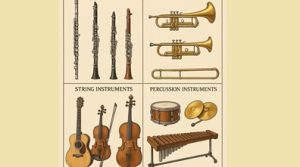What is Grave Tempo? A Slow Tone in Music Language
What is Grave Tempo? A Slow Tone in Music Language
The term ‘grave tempo’ has been heard a lot, but most people don’t understand it; it is a crucial component in music writing and performance.
If your mind would like to stumble into this other exciting realm of music, a world that steals your soul and makes time stand still, then you can read further on grave tempo, what it means, its use in music, and how it has affected musical composition.
What is Grave Tempo?
Grave is in music to be the slowest tempo of all, having that solemn weighty mood.
It creates a deep sense of reflection and intensity, thus drawing listeners into a world where time seems to be suspended.
The most extreme use of the term refers to very slow pacing as appropriate for an experience of reflection and depth in music; this was for a piece marked by the term “grave”: it would have a deliberate pace in which every note would seem to infuse a kind of somberness and seriousness into it.

A grave tempo says it is time to slow down and listen wholly to the music. Also, it commands our attention so that we listen carefully and give each note time to resonate.
It creates a specific atmosphere of deep concentration and reverence in the music, as well as weightiness for the music.
Also, it produces the opening stage of a story over a very gradual length of time, almost as if that story were releasing itself very slowly. It is often associated with sadness, longing, and introspection.
It serves as a canvas on which some of the deepest human experiences can be presented, allowing audiences to reflect on their own emotions in a personalized but more profound way.
How Slow is Grave Tempo?
It usually falls within 60-80 BPM: grave tempo. Created by a speed that requires each note to breathe, tension builds up through the course of the piece.
The slower the pace, the deeper the feelings expressed compared to a fast tempo; achieving the atmosphere of such musically sustained harmonies using long notes creates a sharper atmospheric effect than the echo of the song.
Examples of Grave Tempo in Music
Historical grave tempo composers were able to convey all kinds of emotions and narrations through the present grave tempo.
This could be said of the figures from the somber and stately sounds of the classical period to those evocative soundtracks of contemporary films.
Important examples include:
- Gustav Mahler’s Symphony No. 5 – This has a first movement marked “Trauermusik” (music for a funeral) with a profound and introspective grave tempo that allows the setting of a mournful and thoughtful aura.
- Hans Zimmer’s “Time” from Inception – This hauntingly gorgeous piece of music adds considerable emotion through its slow, deliberate, measured grave tempo, thus providing an unforgettable musical moment.
- Chopin’s Nocturne No. 2, Opus 9-2 – It gives an impression of musical introspection accompanied by lovely melodious yet placid harmonies at a slow pace. Music producers and musicians conduct home recording studios, which offer the opportunity to explore the different tempos in which music can be recorded. Grave tempo added into your recordings could provide your music with weighty false emotions that could resonate at these levels in your listeners.
Techniques Used
For any composer or musician wishing to fully exploit the grave tempo effect, many techniques can be applied to improve the whole musical experience:
- Instrumentation and Arrangements: An excellent complementary feature to grave tempo would be instrumentation choice. The heavier and deeper instruments in pitch such as low strings or deep brass would resonate with the grave tempo. Some arrangements though are taking special considerations with wide intervals, sustaining notes, and some others to amplify the site’s gravitas and solemnity.
- About Melodic and Harmonic Modalities: It is not uncommon in the construction of melodies for spaciousness and contemplation, typically going along with long durations and slow melodic distances in note lengths and distances. Harmonically, tones are preferred that conform to emotion-rich depth chords with the full idea. In addition, minor 6ths and major 7ths are viewed as expressive intervals.
- Harmonic Depth: The harmonies to be chosen must complement the grave reality of slow, reflection-oriented music, so they would be able to generate a more profound emotional response in those hearing it.
- Role of dynamics and articulation: This all serves to make the grave tempo potentate. A subtle control of volume and articulation change creates the feelings arc created by the music, adding words that create an enigma to each phrase. Already attention has to be given to articulation details, i.e. played legato (smooth and connected) or staccato (short and detached).
Dos and Don’ts of Working with It
Dos Don’ts
- Experiment with spacious melodies Rush through the music
- Use Rich and Resonant Instrumentation Overuse Fast, Staccato Passages
- Construct tension through careful pacing Neglect Dynamics and Articulation
- Open the heart to expressive dynamics Sacrifice musicality for the sake of slowness
- Create a contemplative atmosphere Do not underestimate the emotionalism of grave tempo.
Frequently Asked Questions (FAQ)
- Is grave tempo applicable to all genres of music?
Yes! It fits into the many kinds of genres: classical, film score, and modern music at present. No matter what the musical style, it added richness and intensity emotionally.
- How do I balance the slow pace of the grave tempo while keeping the music interesting?
Slow pacing has the importance of maintaining a good balance throughout so that the listener stays engaged. Using dynamic contrasts, clever articulation, and exciting melodic lines creates forward motion and tension so the whole experience is worth hearing.
- Are there specific instruments that work exceptionally well with grave tempo?
It is achievable by any musical instrument, but some are particularly better: the richness of low-end tones, such as those found in cellos, double-basses, and low brass, produces a very profound resonant quality revealed in an even heavier complement to the gloomy atmosphere.
Conclusion
And that ends our delightful foray into the fascinating world of music terms!
The emotional weight it is capable of, then, as well as how it might pervade atmosphere, techniques, and relevance in the music production sphere.
Did we meet all your needs on that front? Let us know in the comments!

Key Takeaways
Additionally. this article covered the topic of grave tempo, exploring its impact on music production, home studio recording, and audio engineering.
Here are some key takeaways:
- Firstly, it is the slowest tempo, creating a serious yet contemplative atmosphere in music.
- Lastly, it falls typically between 60 and 80.





